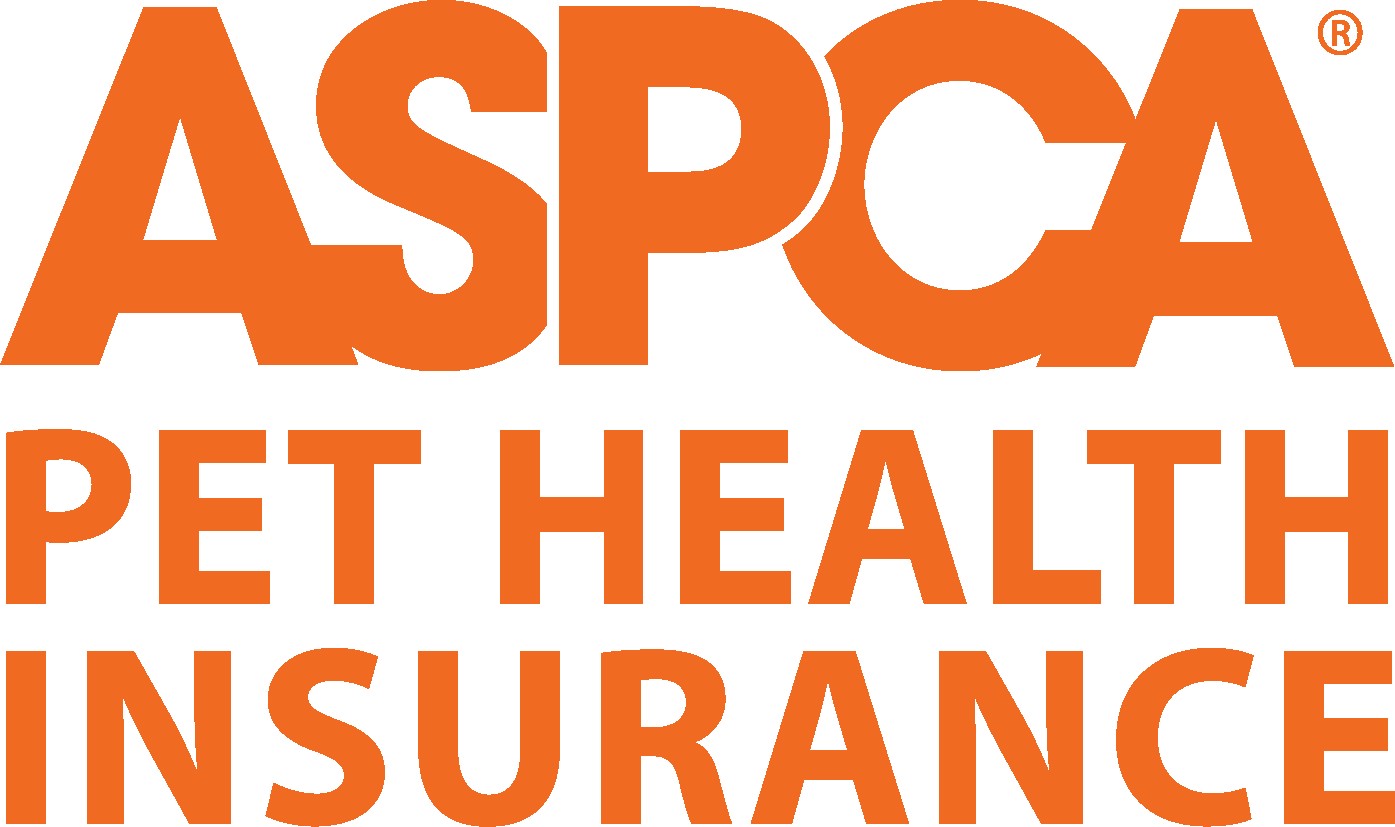Pet insurance in California can provide a financial safety net for pet owners, but How Much Is Pet Insurance In California? The average cost for pet insurance in California is approximately $56 per month, though this can vary based on several factors. At PETS.EDU.VN, we understand the importance of being prepared for unexpected veterinary costs. This article breaks down the costs, coverage options, and top providers in California to help you make an informed decision. Understanding the nuances of pet health coverage and comparing pet coverage costs are essential for responsible pet ownership.
1. Top-Rated Pet Insurance Options In California
Choosing the right pet insurance involves researching, analyzing, and comparing various companies. Here are some of the best pet insurance options available in California, each with unique features and benefits:
1.1. Lemonade
Lemonade stands out as a top pick for California pet owners due to its innovative approach, competitive pricing, and efficient claims process.
Known for its user-friendly digital interface and customizable add-on packages, Lemonade offers a unique wellness package for puppies and kittens, including spay and neuter coverage. Their use of artificial intelligence (AI) streamlines customer service and claims processing.
Pros:
- Affordable pricing
- Easy-to-use digital interface
- Unique wellness packages
Cons:
- Doesn’t cover senior pets enrolling for the first time at age 10 to 14 years
- Behavioral conditions not covered in the base plan
- Some coverages require add-ons
Coverage Details:
- Annual Limits: $5,000-$100,000
- Deductibles: $100-$750
- Reimbursement Rates: 70%-90%
- Average Monthly Cost: $38–$65
Additional Options:
- Wellness plan options: Routine Vet Care, Routine Vet Care Plus, Puppy and Kitten Routine Care
- Add-ons: Exam fees ($5–$8 per month), dental illness ($13 per month), behavioral conditions ($5 per month), end-of-life and remembrance ($3–$4 per month), or physical therapy ($2–$3 per month)
Average Monthly Cost:
- Dogs: $65
- Cats: $38
1.2. Pets Best
Pets Best is a recommended provider for California pet owners who value direct vet payments, which reduces upfront healthcare costs. Their deductibles start at $50, lower than most competitors. They also offer an accident-only plan starting at just $6 per month, making it a budget-friendly option.
Pros:
- Direct vet payments
- Low deductibles starting at $50
- Affordable accident-only plan
Cons:
- More expensive than other options for accident and illness plans
- Fewer annual limit options
- Excludes coverage for alternative and holistic treatments
Coverage Details:
- Annual Limits: $2,500-Unlimited
- Deductibles: $50-$1,000
- Reimbursement Rates: 70%-90%
- Average Monthly Cost: $43–$71
Additional Options:
- Wellness add-ons can tack on an average of $19 to $29 to monthly premiums.
Average Monthly Cost:
- Dogs: $71
- Cats: $43
1.3. Embrace
Embrace provides comprehensive coverage and several stackable discounts, saving you up to 25% on premiums. Their wellness plan covers items such as grooming and obedience training. Embrace is only available for California-based pets enrolling before the age of 5 years old.
Pros:
- Comprehensive coverage
- Stackable discounts
- Wellness plan covers grooming and obedience training
Cons:
- Requires a special exam to waive the orthopedic waiting period
- May deny or cancel coverage if a general exam isn’t received
- Doesn’t enroll California pets after turning 5 years old
Coverage Details:
- Annual Limits: $5,000–Unlimited
- Deductibles: $200–$1,000
- Reimbursement Rates: 70%-90%
- Average Monthly Cost: $36–$64
Additional Options:
- Add-ons available for exam fees and prescription drug coverage.
Average Monthly Cost:
- Dogs: $64
- Cats: $36
1.4. Figo
Figo offers highly customizable plans and add-ons for comprehensive coverage, including vet exam fees and wellness care, all at competitive prices. They also provide a telehealth line for California pet owners with urgent questions. Figo offers a 100% reimbursement option, meaning you’ll only pay premiums out-of-pocket for covered vet bills.
Pros:
- Highly customizable plans
- Telehealth line for pet owners
- 100% reimbursement option
Cons:
- Changes deductible options based on your pet’s age
- Does not provide exam fee coverage in a standard plan
- Charges a significant amount for add-on exam fee coverage
Coverage Details:
- Annual Limits: $5,000-Unlimited
- Deductibles: $100–$1,500
- Reimbursement Rates: 70%-100%
- Average Monthly Cost: $27–$44
Additional Options:
- Add coverage for vet exam fees for $16 per month for dogs or $9 per month for cats.
- Purchase wellness coverage for an additional $10 per month.
Average Monthly Cost:
- Dogs: $44
- Cats: $27
1.5. ASPCA Pet Health Insurance
ASPCA Pet Health Insurance is suitable for California pets of any age, with no upper age limits for enrollment. They offer a budget-friendly accident-only plan and are the only provider reviewed with equine coverage.
Pros:
- No upper age limits
- Budget-friendly accident-only plan
- Offers equine coverage
Cons:
- Enforces a two-week waiting period on accident coverage
- Doesn’t offer annual limit options higher than $10,000
- Doesn’t offer an online chat or 24/7 customer service option
Coverage Details:
- Annual Limits: $2,500-$10,000
- Deductibles: $100-$500
- Reimbursement Rates: 70%-90%
- Average Monthly Cost: $28–$54
Additional Options:
- Two wellness plans are available: Basic plan ($10 per month) and Prime plan ($25 per month).
Average Monthly Cost:
- Dogs: $54
- Cats: $28
2. Comparison Of The Best Pet Insurance In California
Choosing the right pet insurance plan ensures your pet has adequate coverage in an emergency. Cost and coverage vary, so compare options to make an informed decision suiting your pet’s needs.
| Company | Our Award | Average Monthly Rate | Annual Limits | BBB Rating |
|---|---|---|---|---|
| Lemonade | Top Pick for California Pet Owners | $52 | $5k–$100k | B- |
| Pets Best | Best Plan Selection | $58 | $2.5k–Unlimited | A+ |
| Embrace | Our Pick for Wellness Plan Coverage | $48 | $5k–Unlimited | A+ |
| Figo | Most Affordable Premiums | $36 | $5k–Unlimited | B |
| ASPCA Pet Health Insurance | Best for Lifelong Protection | $43 | $2.5k–$10k | NR |








3. Cost Factors For Pet Insurance In California
How much is pet insurance in California? The average cost is influenced by several factors:
3.1. Average Cost Of Pet Insurance In California
The average cost of pet insurance in California is $56 per month, which is 22% more than the national average of $46. This breaks down to $72 for dogs and $41 for cats.
3.2. Provider Cost Comparison
The price of your pet’s plan may differ from these averages. Pet insurance companies generally determine premiums based on your pet’s breed, age, and location. The price will also vary depending on the coverage and customization options you choose. Here is a breakdown of monthly costs for our top picks for pet insurance companies and other options in California.
| Provider | Cost of California Dog Insurance | Cost of California Cat Insurance | Average Cost |
|---|---|---|---|
| AKC | $67 | $39 | $57 |
| Allstate | $59 | $39 | $47 |
| ASPCA Pet Health Insurance | $54 | $28 | $43 |
| Embrace (and Geico) | $64 | $36 | $48 |
| Fetch | $75 | $39 | $63 |
| Figo | $44 | $27 | $36 |
| Hartville | $54 | $28 | $43 |
| Healthy Paws | $48 | $19 | $34 |
| Lemonade | $65 | $38 | $52 |
| Liberty Mutual | $76 | $41 | $59 |
| MetLife | $49 | $30 | $41 |
| Paw Protect | $53 | $33 | $42 |
| Pets Best (Farmers and Progressive) | $71 | $43 | $58 |
| Prudent Pet | $84 | $44 | $67 |
| Wagmo | $64 | $39 | $54 |
| Pumpkin | $94 | $44 | $70 |
| Spot | $66 | $33 | $52 |
| Trupanion | $203 | $68 | $147 |
3.3. Average Cost By City In California
Your location in California may affect your pet insurance costs. Factors like the cost of living and average veterinary expenses in your city are considered.
| City in California | Average Pet Insurance Cost |
|---|---|
| Fresno | $35 to $39 |
| Sacramento | $35 to $39 |
| San Francisco | $45 to $49 |
| San Jose | $35 to $39 |
4. Finding The Cheapest Pet Insurance In California
Based on research, the cheapest pet insurance provider in California is Healthy Paws, costing pet owners an average of $34 per month for a comprehensive accident and illness policy. This is 39% less than the state average.
| Company | Average Monthly Cost |
|---|---|
| Healthy Paws | $34 |
| Figo | $36 |
| MetLife | $41 |
| ASPCA Pet Health Insurance | $43 |
| Embrace | $48 |
Remember, the lowest cost doesn’t always mean it’s the best plan. Consider both costs and coverage.
To save on pet insurance in California, assess your pet’s needs against your budget. Aim for adequate coverage and avoid unnecessary add-ons.
5. Potential Savings With Pet Insurance
Pet insurance provides a financial safety net that can help pet owners afford a variety of routine and emergency veterinary costs. Based on the average annual cost of pet ownership and pet insurance, California policyholders can expect to save an average of $229 to $693 per year on veterinary expenses.
5.1. Real-World Example
Here’s an example of an emergency veterinary care scenario and treatment cost. Finnley, a 1-year-old French bulldog, got bitten by a rattlesnake while on a hike with his owners. Here is the treatment cost before pet insurance:
| Treatment | Cost* |
|---|---|
| Two doses of antivenom | $1,200 |
| Wound treatment | $1,000 |
| 24-hour hospitalization | $1,000 |
| Emergency room exam | $150 |
| Blood work | $150 |
| Intravenous (IV) fluids | $75 |
| Oral pain medication | $50 |
| Total | $3,625 |
With pet insurance, the out-of-pocket costs would run $1,734 rather than $3,625 – resulting in $1,891 in savings. Here is a breakdown of the out-of-pocket costs with pet insurance with the dog in our example above.
| Pet Insurance | Cost |
|---|---|
| Average cost of annual pet insurance | $759 |
| $250 deductible | $250 |
| 20% co-insurance | $725 |
| Total | $1,734 |
6. Why Invest In Pet Insurance In California?
State-specific hazards for pets in California can make purchasing an insurance policy a matter of peace of mind for many owners. Consider these factors to determine if pet insurance is a worthwhile investment.
6.1. Common Pet Diagnoses In California
According to Embrace Pet Insurance, the top pet-related diagnoses in California include:
- Allergic dermatitis
- Osteoarthritis
- Diarrhea
- Vomiting
- Ear canal inflamed
- Skin mass
- Anxiety
- Lameness
- Seizure
- Urinary tract infection
7. Is Pet Insurance A Worthwhile Investment In California?
Pet insurance can help cover unexpected veterinary bills or prevent you from compromising on your pet’s care in an emergency.
Based on a survey of 1,000 pet owners with insurance in February 2025:
- 84% think the coverage is worth it
- 76% noted satisfaction with their current pet insurer
- 94% of pet owners have taken their dog or cat to the vet within the last year
Consider your pet’s unique needs when deciding if pet insurance is worth it.
7.1. Expert Opinions
“Pet care costs are skyrocketing. I recommend pet parents purchase insurance when their pet is young, or before health conditions develop. However, pet owners [may] also have a backup credit card or savings account to help them pay for veterinary bills while they wait for insurance reimbursements.”
Sarah Pruss, DVM
Veterinarian, Wheaton Animal Hospital
“Pet health costs can add up quickly and unexpectedly, making pet insurance worth it. In our practice, pet owners with insurance can choose the option that provides the best care for their pet, not just the option they can afford.”
Ksenia Banes, CVT, VTS
Ophthalmology technician, Eye Care for Animals
“I recommend pet insurance to my clients so they can afford pet care without worry. Whether or not a pet parent has insurance, I always discuss the financial and non-financial implications of diagnostics or treatments. When they know costs are covered, clients can focus on determining which option is truly the best for their family.”
Sophi Wakefield, DVM
Veterinarian, Wheaton Animal Hospital
8. Frequently Asked Questions About Pet Insurance In California
8.1. Can I Use Pet Insurance At Any Vet In California?
Yes, you can use pet insurance plans at any veterinary clinic in California. Most providers require you to pay upfront and submit a claim for reimbursement. Some offer direct vet pay.
8.2. How Does The Cost Of Pet Insurance In California Compare To The National Average?
The average annual cost of pet insurance for dogs in California is approximately 20% higher than the national average. For cats, it’s about 28% higher.
8.3. When Is The Best Time To Buy Pet Insurance In California?
The best time is when your pet is young. Younger pets are generally healthier, and it’s beneficial to sign up before any health issues develop.
9. Understanding Pet Insurance Jargon
Navigating pet insurance requires understanding some key terms. Here’s a quick glossary to help you:
- Premium: The monthly or annual payment you make to keep your insurance policy active.
- Deductible: The amount you must pay out-of-pocket before your insurance coverage kicks in.
- Reimbursement Rate: The percentage of covered expenses that the insurance company will pay after you meet your deductible.
- Annual Limit: The maximum amount the insurance company will pay out in a year for your pet’s care.
- Pre-Existing Condition: A health condition that your pet had before you enrolled in the insurance plan, which is generally not covered.
- Waiting Period: The time you must wait after enrolling in a pet insurance plan before coverage begins.
10. Factors That Influence Pet Insurance Costs
Several factors can influence the cost of pet insurance in California. Understanding these can help you make informed decisions and potentially lower your premiums.
10.1. Pet’s Age
Older pets typically have higher premiums because they are more likely to develop health issues. Insuring your pet when they are young can often result in lower monthly costs.
10.2. Breed
Certain breeds are predisposed to specific health conditions, which can affect insurance costs. For example, large dog breeds may be prone to hip dysplasia, leading to higher premiums.
10.3. Location
The cost of veterinary care varies by location. Areas with higher costs of living tend to have higher pet insurance premiums.
10.4. Coverage Options
The level of coverage you choose significantly impacts the cost. Accident-only plans are generally cheaper than comprehensive plans that cover both accidents and illnesses. Adding wellness coverage will also increase premiums.
10.5. Deductible and Reimbursement Rate
Choosing a higher deductible will lower your monthly premium, but you will need to pay more out-of-pocket before your insurance kicks in. Similarly, a lower reimbursement rate will result in a lower premium, but you will receive less money back from the insurance company.
11. Types Of Pet Insurance Plans
Understanding the different types of pet insurance plans available can help you choose the one that best fits your needs and budget.
11.1. Accident-Only Plans
These plans cover veterinary care costs if your pet is injured in an accident. They typically include coverage for:
- Broken bones
- Lacerations
- Ingestion of foreign objects
- Emergency care related to accidents
11.2. Accident And Illness Plans
These comprehensive plans cover both accidents and illnesses, providing broader protection for your pet. They usually include coverage for:
- Accidents (as listed above)
- Illnesses (such as infections, allergies, and cancer)
- Hereditary and congenital conditions
- Diagnostic tests
- Prescription medications
11.3. Wellness Plans
Wellness plans are designed to cover routine and preventive care costs. They can be added to accident-only or accident and illness plans and typically include coverage for:
- Annual check-ups
- Vaccinations
- Flea and heartworm prevention
- Dental cleanings
12. How To Choose The Right Pet Insurance Plan
Choosing the right pet insurance plan involves considering various factors to ensure it meets your pet’s specific needs and your financial situation.
12.1. Assess Your Pet’s Needs
Consider your pet’s age, breed, lifestyle, and health history. Younger pets may benefit from comprehensive coverage, while older pets may need a plan that covers chronic conditions.
12.2. Review Coverage Options
Compare the coverage options offered by different providers. Ensure the plan covers the types of treatments and conditions your pet is most likely to need.
12.3. Check Policy Exclusions
Read the fine print and understand what is not covered by the policy. Common exclusions include pre-existing conditions, cosmetic procedures, and certain breed-specific conditions.
12.4. Consider Your Budget
Determine how much you can afford to pay in monthly premiums and out-of-pocket expenses. Choose a plan with a deductible and reimbursement rate that aligns with your budget.
12.5. Read Customer Reviews
Research the reputation of the insurance company by reading customer reviews and ratings. Look for feedback on claims processing, customer service, and overall satisfaction.
13. Tips For Lowering Pet Insurance Costs
There are several strategies you can use to lower the cost of pet insurance in California.
13.1. Shop Around
Compare quotes from multiple providers to find the best combination of coverage and price.
13.2. Adjust Deductible And Reimbursement Rate
Opt for a higher deductible to lower your monthly premium. Similarly, choosing a lower reimbursement rate can also reduce costs.
13.3. Look For Discounts
Many insurance companies offer discounts for:
- Insuring multiple pets
- Being a member of certain organizations
- Enrolling in autopay
13.4. Enroll Early
Insuring your pet when they are young and healthy can result in lower premiums.
13.5. Consider A Wellness Plan
While wellness plans increase premiums, they can help you budget for routine care and potentially prevent more costly health issues in the future.
14. Understanding Waiting Periods
Most pet insurance policies have waiting periods, which are the time you must wait after enrolling before coverage begins. Waiting periods can vary depending on the provider and the type of coverage.
14.1. Accident Coverage
Waiting periods for accident coverage are typically shorter, ranging from 24 hours to a few days.
14.2. Illness Coverage
Waiting periods for illness coverage are usually longer, ranging from 14 to 30 days.
14.3. Special Conditions
Some policies may have longer waiting periods for specific conditions, such as orthopedic issues.
15. The Claims Process
Understanding the claims process can help you navigate veterinary expenses with pet insurance.
15.1. Visit The Vet
Take your pet to a licensed veterinarian for treatment.
15.2. Pay The Bill
Pay the veterinary bill upfront.
15.3. Submit A Claim
Fill out a claim form provided by your insurance company and submit it along with the veterinary bill and any relevant medical records.
15.4. Claims Review
The insurance company will review your claim to determine the eligible expenses.
15.5. Reimbursement
If your claim is approved, the insurance company will reimburse you according to your policy’s terms.
16. Resources For Pet Owners In California
California offers a range of resources to support pet owners.
16.1. Local Veterinary Clinics
Find reputable veterinary clinics in your area for routine and emergency care.
16.2. Animal Shelters And Rescue Organizations
Consider adopting a pet from a local animal shelter or rescue organization.
16.3. Pet-Friendly Businesses And Services
Discover pet-friendly businesses and services in California, such as dog parks, grooming salons, and pet supply stores.
16.4. Emergency Pet Care Information
Keep information about emergency pet care readily available, including the location of emergency veterinary hospitals and poison control hotlines.
17. Alternative Solutions To Pet Insurance
If pet insurance doesn’t suit your needs, alternative options are available for managing pet care expenses.
17.1. Pet Savings Account
Set up a dedicated savings account for your pet’s healthcare needs.
17.2. Carecredit
Use a CareCredit card to finance veterinary expenses and pay them off over time.
17.3. Veterinary Payment Plans
Some veterinary clinics offer payment plans that allow you to spread out the cost of treatment.
17.4. Pet Membership Programs
Explore pet membership programs that offer discounted veterinary services and routine care.
18. Keeping Your Pet Healthy
Preventive care is essential for keeping your pet healthy and potentially reducing veterinary costs.
18.1. Regular Veterinary Check-Ups
Schedule regular check-ups with your veterinarian to monitor your pet’s health and detect any issues early.
18.2. Proper Diet And Exercise
Provide your pet with a balanced diet and regular exercise to maintain a healthy weight and prevent health problems.
18.3. Vaccinations And Parasite Prevention
Keep your pet up-to-date on vaccinations and parasite prevention to protect them from infectious diseases.
18.4. Dental Care
Maintain your pet’s dental health by brushing their teeth regularly and providing dental chews.
19. Conclusion
Navigating the world of pet insurance in California can seem daunting, but understanding the costs, coverage options, and available providers can empower you to make the best decision for your furry friend. How much is pet insurance in California? The answer depends on your pet’s unique needs and your financial situation. By carefully assessing your options and considering the factors discussed in this article, you can ensure your pet receives the care they deserve without breaking the bank.
At PETS.EDU.VN, we’re committed to providing you with the most current and trustworthy information to help you make informed decisions about your pet’s health. We believe that all pet owners should have access to quality information and resources to provide the best possible care for their animals.
For more detailed information, personalized recommendations, and to explore additional resources, we encourage you to visit our website at PETS.EDU.VN or contact us directly at 789 Paw Lane, Petville, CA 91234, United States, or via WhatsApp at +1 555-987-6543. Our team of experts is always available to help you navigate the complexities of pet care and find the solutions that best fit your needs. Let PETS.EDU.VN be your trusted partner in ensuring a happy, healthy life for your beloved pet. Visit pets.edu.vn today to learn more about comprehensive care for your furry friend, including information on preventive care, nutrition, and local veterinary services.
20. FAQ
20.1. What Does Pet Insurance Typically Cover In California?
Pet insurance in California typically covers accidents, illnesses, surgeries, hospitalizations, diagnostic tests, and medications. Some policies also offer coverage for hereditary conditions, chronic illnesses, and alternative therapies.
20.2. Are There Any Specific Exclusions I Should Be Aware Of?
Common exclusions include pre-existing conditions, cosmetic procedures, routine care (unless a wellness plan is added), and certain breed-specific conditions. Always review the policy’s exclusions before purchasing.
20.3. How Does Pre-Existing Condition Affect Coverage?
Pre-existing conditions are generally not covered by pet insurance policies. A pre-existing condition is any illness or injury that your pet had before you enrolled in the insurance plan.
20.4. Can I Customize My Pet Insurance Policy?
Yes, many pet insurance companies allow you to customize your policy by choosing your deductible, reimbursement rate, and annual limit. You can also add optional coverage for wellness care, dental care, and other services.
20.5. Do All Pet Insurance Companies Have The Same Waiting Period?
No, waiting periods vary depending on the insurance company and the type of coverage. Some companies have shorter waiting periods for accident coverage and longer waiting periods for illness coverage.
20.6. Can I Use Any Veterinarian With My Pet Insurance?
Yes, most pet insurance policies allow you to use any licensed veterinarian.
20.7. How Do I File A Claim?
To file a claim, you typically need to fill out a claim form provided by your insurance company and submit it along with the veterinary bill and any relevant medical records.
20.8. How Long Does It Take To Get Reimbursed After Filing A Claim?
The reimbursement time can vary depending on the insurance company. Some companies offer faster reimbursement times than others.
20.9. What Is The Difference Between A Deductible And A Reimbursement Rate?
A deductible is the amount you must pay out-of-pocket before your insurance coverage kicks in. A reimbursement rate is the percentage of covered expenses that the insurance company will pay after you meet your deductible.
20.10. Is Pet Insurance Worth It For A Healthy Pet?
Pet insurance can be worth it for a healthy pet because it provides a financial safety net in case of unexpected accidents or illnesses. Even healthy pets can experience unforeseen medical issues, and pet insurance can help you afford the best possible care without breaking the bank.
